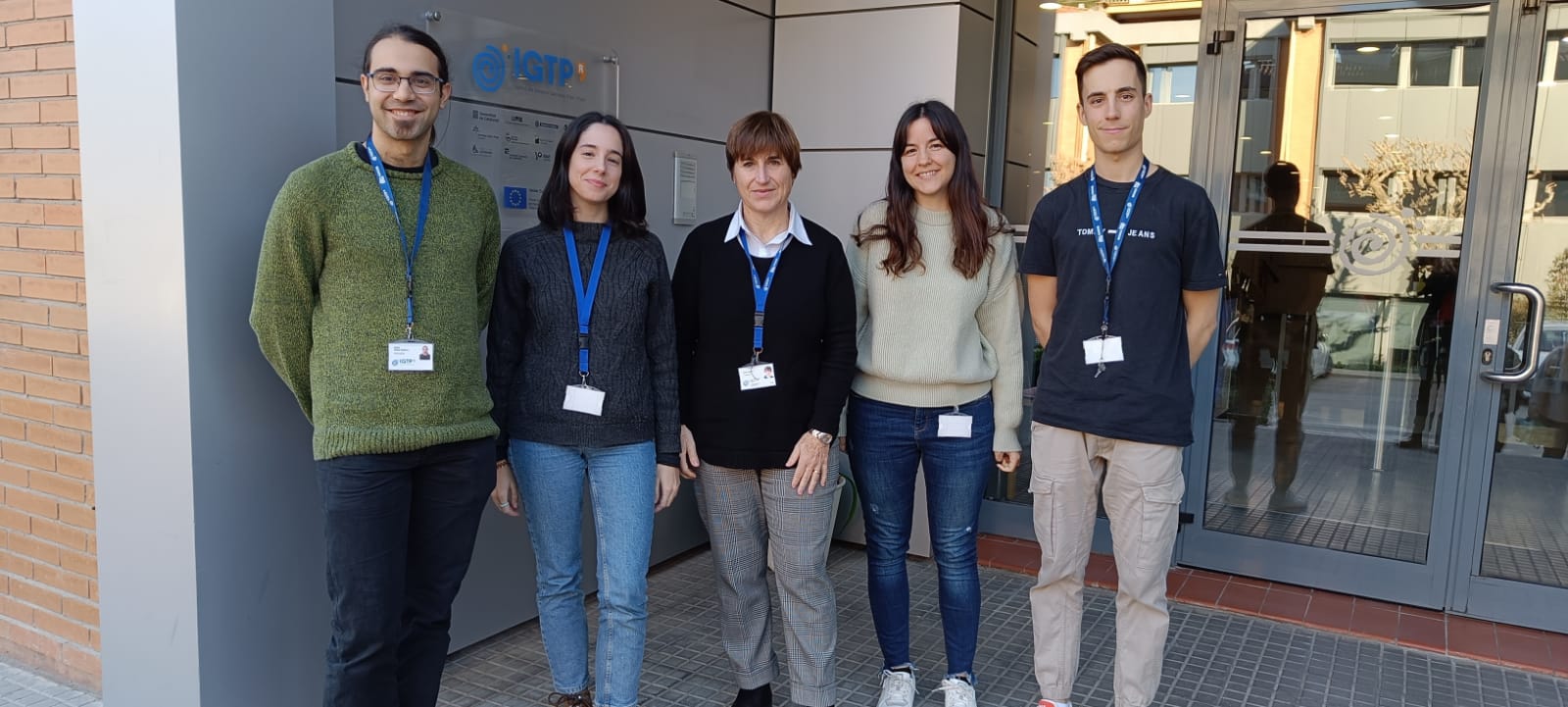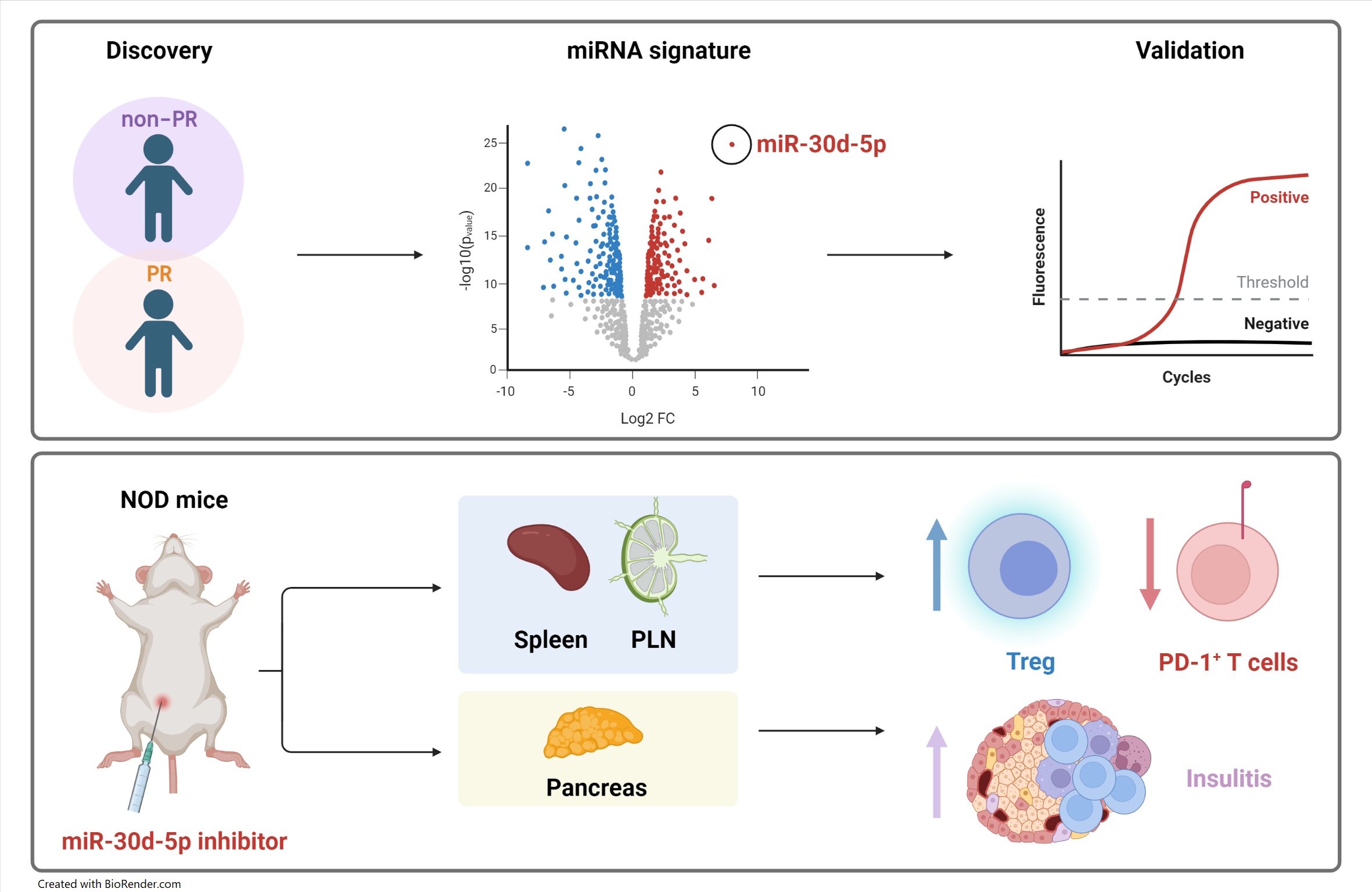Studying partial remission of type 1 diabetes in children: New biomarkers and the immunoregulatory role of microRNA

A study led by researchers from IGTP's Immunology of Diabetes group has identified new microRNA as biomarkers for the partial remission phase, also known as "honeymoon phase", of type 1 diabetes, and has linked the miR-30d-5p microRNA to immunoregulatory processes that may take place during this phase.
The partial remission phase of type 1 diabetes (T1D), a poorly studied phase that is present in 60-80% of diabetes patients, occurs after initiating insulin treatment. The increasing interest in this phase lies in its association with mechanisms of immunoregulation and regeneration of insulin producing β-cells, which are destroyed by the immune system of patients with this disease. However, the immune mechanisms underlying this honeymoon phase are not yet clear.
Previously, the Immunology of Diabetes group demonstrated changes on peripheral blood at the immune cell and cytokine level during partial remission not observed in children without remission, and predicted this phase using immunological parameters. Nevertheless, this study suggests new epigenetic biomarkers (microRNA) that are present in children with remission and shows that one of these microRNAs (miR-30d-5p) has an immunoregulatory role. This study, published at the Non-coding RNA journal, has been conducted by researchers from IGTP, Hospital Germans Trias i Pujol (Badalona), Hospital Parc Taulí (Sabadell), CMCiB, and Oxford University.
The microRNA are small, non-coding RNA molecules that suppress gene expression. These microRNA are altered in certain diseases, such as T1D, but their differential expression has not yet been studied during the partial remission phase.

This is the first study showing a unique microRNA signature expression during the partial remission phase of T1D. These microRNA are related to various pathways within the immune system (for example, TGF-β signalling) and biological processes closely related to the pathogenesis of T1D (immune system, cell death and stress, and metabolic pathways). In addition, using the T1D murine model, the researchers have shown that the most differentially expressed miRNA in partial remission, i.e., the miR-30d-5p miRNA, modulates the expression of genes involved in regulatory T cell (Treg) expansion and is associated with higher levels of PD-1 (inhibitor) in T cells, reduced infiltration of immune cells into pancreatic islets, and reduced numbers of potentially pathogenic central memory T cells and effector memory T cells at pancreatic lymph nodes.
The main author of the article, Laia Gomez-Muñoz, explains that "these new biomarkers based on microRNA expression may be used to stratify patients in the clinical practice and for patient screening in clinical trials. Also, being able to associate, for the first time, one of these microRNA with immunoregulatory mechanisms within the context of T1D sheds light on the underlying processes occurring during the partial remission phase of T1D, also known as the "honeymoon phase", and allows a greater understanding of the natural evolution of this disease and its various stages."
Reference
Gomez-Muñoz, L; Perna-Barrull, D; Murillo, M; Armengol, MP; Alcalde, M; Catala, M; Rodriguez-Fernandez, S; Sunye, S; Valls, A; Perez, J; Corripio, R; Vives-Pi, M. Immunoregulatory Biomarkers of the Remission Phase in Type 1 Diabetes: miR-30d-5p Modulates PD-1 Expression and Regulatory T Cell Expansion. Non-Coding RNA. 2023, 9, 17. DOI: 10.3390/ncrna9020017

